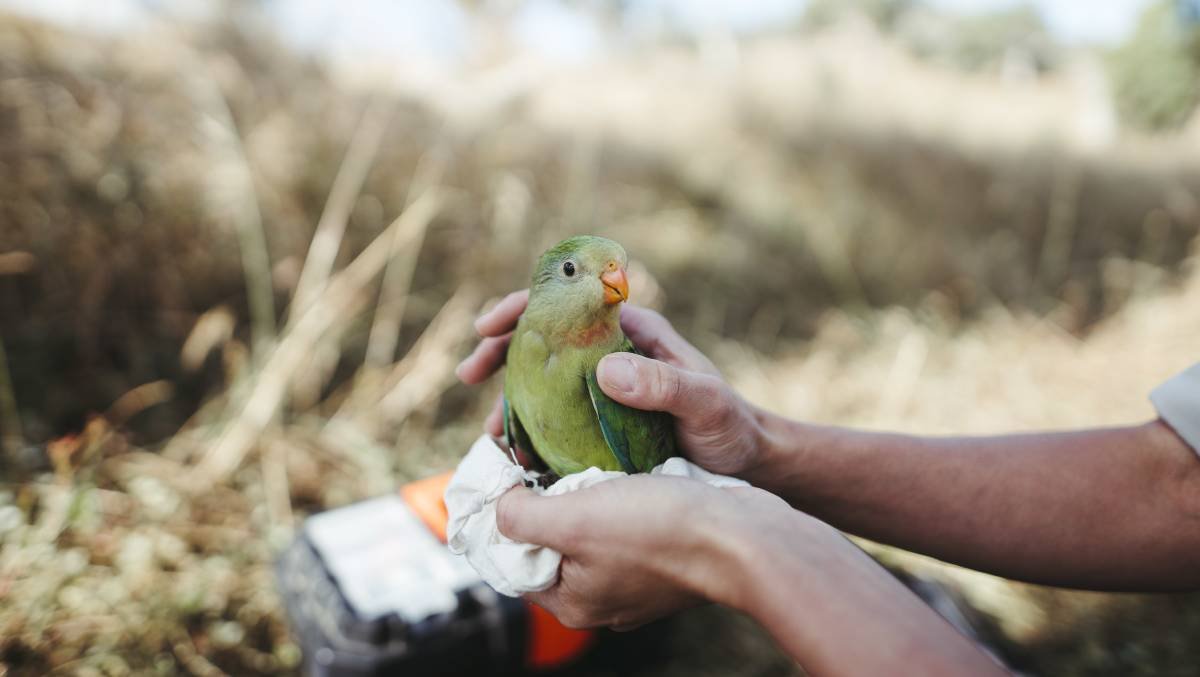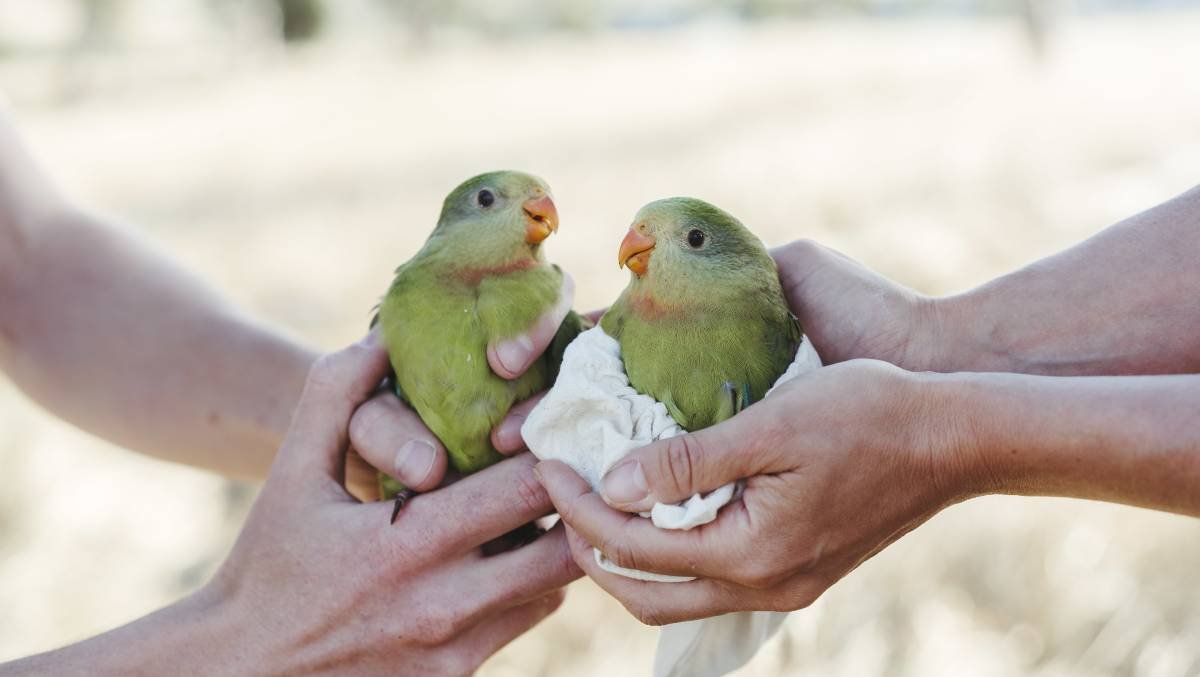
Superb Parrot Project
An imperiled species
There are several challenges facing the conservation of threatened superb parrots (Polytelis swainsonii).
Their high mobility and unpredictable movements have necessitated multi-scale research, ranging from regional (e.g., bioclimatic domain) to local (e.g., nest tree selection). Most of these suggest an uncertain future for the species.
Despite their mobility, their requirements for old, hollow-bearing trees makes them particularly susceptible to the ongoing loss and destruction of crucial breeding and foraging habitat due to land clearing and climate change.
How many are left?
Superb parrots are listed as Vulnerable. However, agreement on population estimates and conservation status is lacking among experts.
This lack of consensus is largely due to important knowledge gaps in superb parrot ecology. A poor understanding of the species’ seasonal movements and breeding ecology, as well as extreme variation in local abundances across large spatial and temporal scales, has impeded robust assessment.
Difficult, but crucial, research
Together with the Difficult Bird Research Group, this superb parrot project aims to address these knowledge gaps by examining the species’ habitat use, population dynamics, and migratory movements.
The knowledge will inform up-to-date conservation assessments and allow for greater protections of critical breeding, foraging, and wintering sites.
Photographs by Dion Geogopoulos
Publications
Cobden et al. (2023) High nest survival, but variable reproductive output in the Superb Parrot (Polytelis swainsonii). Emu, 123(1): 14—23.
Stojanovic et al. (2023) Reproductive skew in a Vulnerable bird favors breeders that monopolize nest cavities. Animal Conservation, 26: 675–683.
Stojanovic et al. (2021) Suitable nesting sites for specialized cavity dependent wildlife are rare in woodlands. Forest Ecology and Management, 483: 118718.
Howland et al. (2016) Birds of a feather flock together: Using trait-groups to understand the effect of macropod grazing on birds in grassy habitats. Biological Conservation, 194: 89—99.
Rayner et al. (2015) Avifauna and urban encroachment in time and space. Diversity and Distributions, 21(4): 428—440.
Ikin et al. (2014) Bird community responses to the edge between suburbs and reserves. Oecologia, 174(2): 545—557.
Le Roux et al. (2014) The future of large old trees in urban landscapes. PLOS One 9(6): e99403.
Lindenmayer et al. (2014) New policies for old trees: Averting a global crisis in a keystone ecological structure. Conservation Letters, 7(1): 61—69.
Rayner et al. (2014) Evaluating empirical evidence for decline in temperate woodland birds: A nationally threatened assemblage of species. Biological Conservation, 171: 145—155.
Rayner et al. (2014) Are protected areas maintaining bird diversity? Ecography, 37(1): 43—53.
Ikin et al. (2013) Pocket parks in a compact city: How do birds respond to increasing residential density? Landscape Ecology, 28(1): 45—56.
Manning et al. (2013) Hollow futures? Tree decline, lag effects and hollow-dependent species. Animal Conservation, 16(4): 395—403.
Ikin et al. (2012) Linking bird species traits to vegetation characteristics in a future urban development zone: Implications for urban planning. Urban Ecosystems, 15(4): 961—977.
Stagoll et al. (2012) Large trees are keystone structures in urban parks. Conservation Letters, 5(2): 115—122.
Stagoll et al. (2010) Using bird-habitat relationships to inform urban planning. Landscape and Urban Planning, 98(1): 13—25.
Manning & Lindenmayer (2009) Paddock trees, parrots and agricultural production: An urgent need for large-scale, long-term restoration in south-eastern Australia. Ecological Management and Restoration, 10(2): 126—135.
Gibbons et al. (2008) The future of scattered trees in agricultural landscapes. Conservation Biology, 22(5): 1309—1319.
Manning et al. (2007) Large-scale spatial and temporal dynamics of the vulnerable and highly mobile superb parrot. Journal of Biogeography, 34(2): 289—304.
Manning et al. (2006) Scattered trees are keystone structures - Implications for conservation. Biological Conservation, 132(3): 311—321.
Manning et al. (2006) Multi-scale site and landscape effects on the vulnerable superb parrot of south-eastern Australia during the breeding season. Landscape Ecology, 21(7): 1119—1133.
Manning et al. (2005) A bioclimatic analysis for the highly mobile Superb Parrot of south-eastern Australia. Emu, 105(3): 193—201.
Manning et al. (2004) The conservation implications of bird reproduction in the agricultural matrix: A case study of the vulnerable superb parrot of south-eastern Australia. Biological Conservation, 120(3): 363—374.




